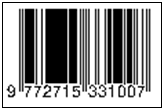Validity of Predictive Markers for Post ERCP Pancreatitis Patients: A Single Centre Study
DOI:
https://doi.org/10.35790/msj.v6i2.51513Abstract
Abstract: Endoscopic retrograde cholangiopancreatography (ERCP) is a proprietary procedure, endoscopic modality, and specialized procedure used to diagnose and treat disorders of the pancreatic and biliary systems. The incidence of reported post-ERCP complications varied among several studies including post ERCP pancreatitis (PEP), duodenal perforation, and cholangitis. In this study, the author would like to show certain intra procedural factors related to PEP incidence. This was a retrospective study of secondary data of patients undergoing ERCP procedures from 2017-2022 at Prof. Dr. R. D. Kandou Hospital, Manado. Length of procedure, cannulation on pancreatic duct, pancreatogram, double wire technique, and the use of certain common bile duct (CBD) stone retrieval techniques such as endoscopic papillary balloon dilatation (EPBD) were recorded and analyzed. The results showed that based on the analyzed data, the percentage of pancreas cannulation was 8%, pancreatogram 5%, double-wire technique 3%, and EPBD procedure 10%, Incidence rate of PEP in all ERCP procedures was 19%. Increased amylase/lipase enzymes were found in 13 of 24 patients (54%) who underwent cannulation; 8 of 16 patients (50%) who underwent pancreatogram; 4 of 9 patients (44%) who underwent double wire procedure; and 10 of 30 patients (33%) who underwent EPBD. This PEP could be caused by several risk factors during ERCP including cannulation, pancreatogram, double wire, and EPBD. Number of cannulation attempt could result in trauma to the ampulla. Pancreatogram could result in hydrostatic, chemical, and allergic injury. Any manipulation of the pancreas that caused trauma could trigger the incidence of PEP. Assessment of the occurrence of PEP was based on increases in lipase and amylase enzyme values by four times the normal value and tested 6 hours after procedure. We could reduce the incidence of PEP by providing prophylactic therapy before ERCP. In conclusion, PEP is the most common complication in ERCP procedures and can be risky in patients with high risk factors. In this study, factors that affecting the incidence of PEP are cannulation, pancreatogram, double wire and EPBD.
Keywords: endoscopic retrograde cholangiopancreatography; pancreatitis; complications
References
Katsinelos P, Lazaraki G, Chatzimavroudis G, Gkagkalis S, Vasiliadis I, Papeuthimiou A, et al. Risk factors for therapeutic ERCP-related complications. Ann Gastroenterol. 2014;27(1):65-72. Available from: https://pubmed.ncbi.nlm.nih.gov/24714755/
Morales SJ, Sampath K, Gardner TB. A review of preventive of Post-ERCP Pancreatitis, Gastroenterol Hepatol (N Y). 2018;14(5):286-92. Available from: https://pubmed.ncbi.nlm.nih.gov/29991936
Panda C, Das Haribhakti SD, Behera SK, Nath P. Restropective analysis of endoscopic retrograde cholangipancreatography (ERCP) procedurs in a tertiary care centre in coastal Odisha. International Journal of Research in Medical Sciences (IJRMS). 2017;5(10):4281-4. Doi: 10.18203/2320-6012.ijrms20174113
Parekh PJ, Majithia R, Sikka SK, Baron TH. The “scope” of Post ERCP Pancreatitis. Mayo Clin Proc. 2017;92(3):434-48. doi: 10.1016/j.mayocp.2016.10.028.
Crockett SD, Wani S, Gardner TB, Falck-Ytter, Barkun AN. Management of acute pancreatitis. Ann Gastroenterol. 2018;154(4):1096–101. Doi: 10.1053/j.gastro.2018.01.032
Singh V, Conwell LD, Banks AP. Acute pancreatitis In: GreenBerger J, Blumberg S, Burakoff R (editors). Current Diagnosis & Treatment: Gastroenterohepatology, Hepatology, and Endoscopy. McGraw-Hill Co. Inc. 2009; p. 291-8.
Iorgulescu A, Sandu I, Turcu F, Iordache N. Post-ERCP acute pancreatitis and its risk factors. J Med Life. 2013;6(1):109-13. Available from: https://pubmed,ncbi.nih.gov/23599832
WHO. Age Standarization of Rates. 2001. Available from: Age Standardization of Rates: A new WHO Standard
Vandevoort J, Soetikno RM, Tham TCK, Wong RCK, Ferrari Jr AP, Montes H, et al. Risk factors for complications after performance of ERCP. Gastrointest Endosc. 2002;56(5):652-6. Doi: 10.1067/mge.2002.129086
Thornton J, Axon A. Towards safer endoscopic retrograde cholangiopancreatography. Gut. 1993; 34(6):721-4. Doi: 10.1136/gut.34.6.721
Kobayashi G, Fujita N, Imaizumi K, Irisawa A, Suzuki M, Murakami A, e al. Wire-guided biliary cannulation technique does not reduce the risk of post-ERCP pancreatitis: multicenter randomized controlled trial. Dig Endosc. 2013;25(3):295-302. Doi: 10.1111/j.1443-1661.2012.01372.x
Lella F, Bagnolo F, Colombo E, Bonassi U. A simple way of avoiding post-ERCP pancreatitis. Gastrointest Endosc. 2004;59(7):830-4. Doi: 10.1016/s0016-5107(04)00363-3
Artifon ELA, Sakai P, Cunha JEM, Halwan B, Ishioka S, Kumar A. Guidewire cannulation reduces risk of post-ERCP pancreatitis and facilitates bile duct cannulation. Am J Gastroenterol. 2007; 102(10):2147-53. Doi: 10.1111/j.1572-0241.2007.01378.x
Pekgöz M. Post-endoscopic retrograde cholangiopancreatography pancreatitis: A systematic review for prevention and treatment. World J Gastroenterol. 2019;25(29):4019-42. Doi: 10.3748/ wjg.v25.i29.4019
Downloads
Published
How to Cite
Issue
Section
License
Copyright (c) 2024 Michael Tendean, Toar D. B. Mambu, Leonard A. Melatunan

This work is licensed under a Creative Commons Attribution-NonCommercial 4.0 International License.
COPYRIGHT
Authors who publish with this journal agree to the following terms:
Authors hold their copyright and grant this journal the privilege of first publication, with the work simultaneously licensed under a Creative Commons Attribution License that permits others to impart the work with an acknowledgment of the work's origin and initial publication by this journal.
Authors can enter into separate or additional contractual arrangements for the non-exclusive distribution of the journal's published version of the work (for example, post it to an institutional repository or publish it in a book), with an acknowledgment of its underlying publication in this journal.
Authors are permitted and encouraged to post their work online (for example, in institutional repositories or on their website) as it can lead to productive exchanges, as well as earlier and greater citation of the published work (See The Effect of Open Access).










